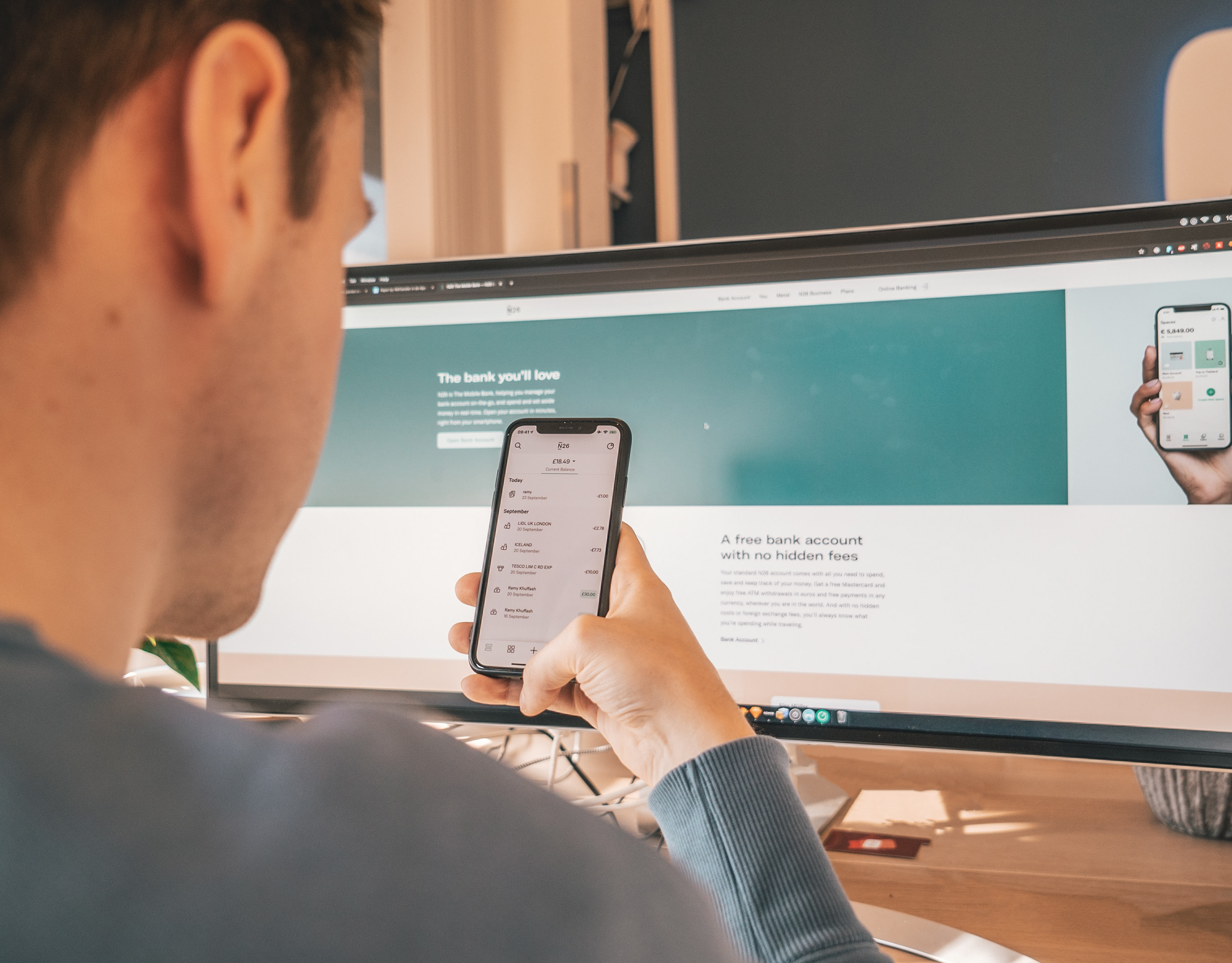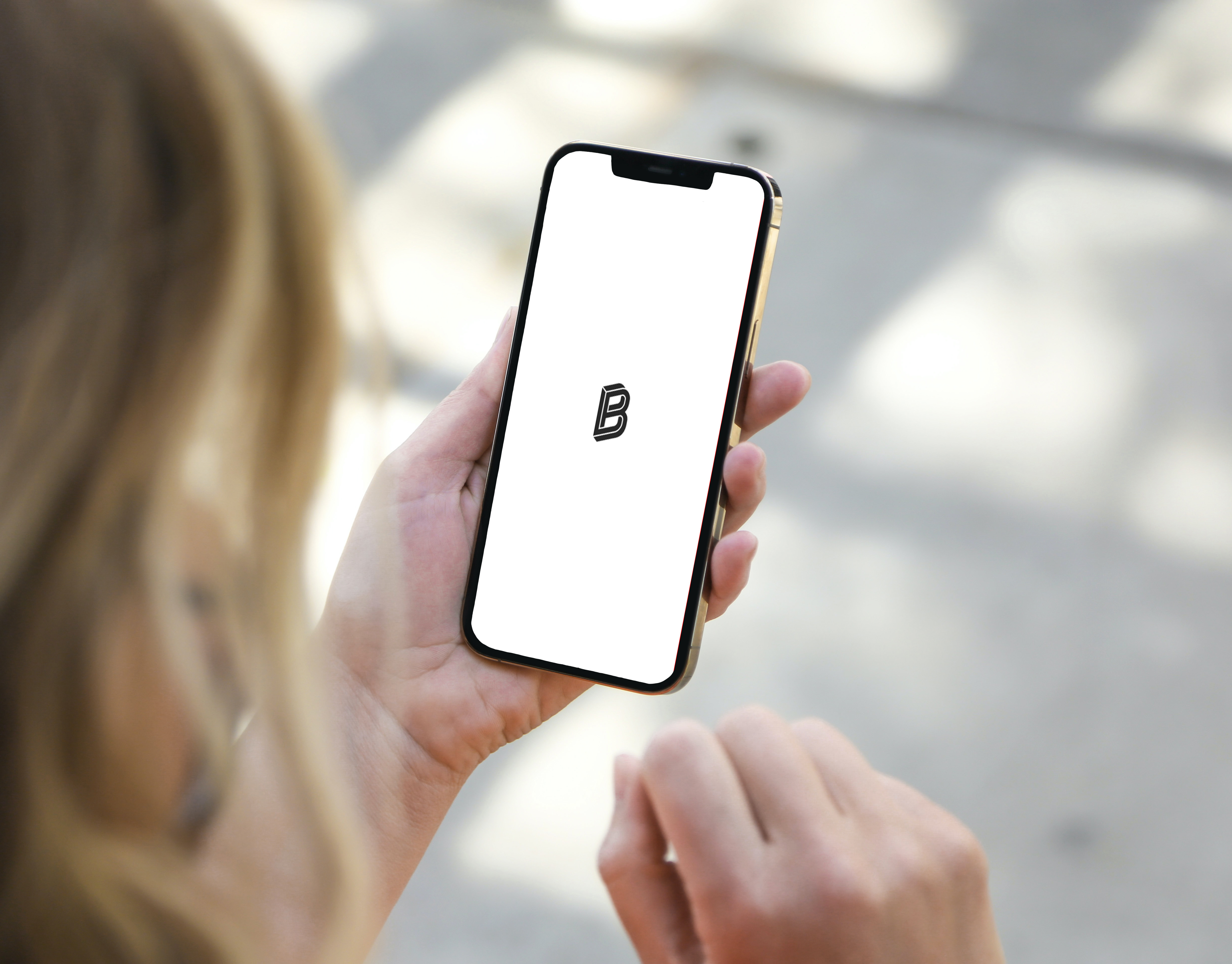Please note: To comply with my non-disclosure agreement (NDA), confidential data has been omitted from this case study. This project was also highly strategic, with the primary deliverable being a new research-backed roadmap. Therefore, this case study focuses on the problem-solving process rather than on final visual designs.
First, a little context...
So, Bitpanda is a big platform in Europe for trading digital assets. Because we're a financial app, we have to comply with a lot of regulations and keep things secure, which means our onboarding process is naturally pretty detailed.
Year: 2023 | Team: Onboarding (PM, Native Engineers) in collaboration with Content Design
So, what was the problem?
We took a look at our user journey and found a pretty big issue: a lot of new users were giving up during the sign-up process. They were leaving before they even got a chance to see what our app was all about.
My first impression was that this wasn't just a case of "bad usability." It looked like a bigger issue, something fundamental, a breakdown of user trust, because we were asking for so much high-friction information right at the beginning.
My role in all this
My job on this project was to lead the design side of things. I owned the research and strategy for this problem space. That meant my main responsibilities were to figure out the real reason for the user drop-off, come up with a new long-term product strategy to fix it, and present a clear, phased roadmap for a redesigned, trust-based onboarding experience.
The journey: figuring out the "why"
My investigation started with numbers but ended with understanding how our users think and feel.
1. Starting with the data
I worked closely with my Product Manager, and we started by digging into the analytics for the onboarding funnel. The numbers were great at showing us where people were dropping off, but they couldn't tell us why. To get more context, I started reading through support tickets from that same time. I found a few small technical bugs, which we ticketed for the engineers, but the data was mostly pointing to a behavioural problem, not a technical one.
2. Questioning the easy answer
The first assumption on the team was pretty simple: "The onboarding is just too long." But I was sceptical. I had used and worked with other fintech apps, and ours felt pretty standard. This led me to ask some different questions, ones that were more about feelings and trust.
My hypothesis changed from "it's a usability issue" to something more fundamental: The problem isn't the length of the process; it's that we're asking for too much, too soon, and breaking our users' trust.
3. Testing the "trust" hypothesis
To see if I was right, I needed to talk to real people. So, I planned and ran a formal usability study. A key part of this was creating an unbranded, high-fidelity prototype of the whole flow. This was important so we could get feedback on the process itself, not on the Bitpanda brand.
The study:
→Methodology: Unmoderated Usability Testing
→Participants: 15 investors across the EU (non-Bitpanda users)
→Tools: Usertesting.com, Figma
→What I wanted to know: What were users thinking, expecting, and feeling as they went through all the sign-up and verification steps?
4. The "aha!" moment
The research came back, and it was crystal clear: my trust hypothesis was right. The biggest theme, by far, was that people wanted to see what the app could do before they handed over their sensitive data.
One participant said it perfectly:
"Companies are collecting too much information; they don’t even know if you are actually going to use the service or not... if I’m interested in using the service, I can fill out the other data."
From insight to ideation: so, what's the plan?
While our engineers were already working on some quick visual polish fixes, my research showed we needed a much deeper, more strategic solution to fix the core trust problem.
I got together with my Product Manager to figure out the best path forward. We explored three main ideas:
→Option 1: Better communication. Could we just build trust through clearer messaging and maybe some gamification?
→Option 2: Feature previews. Could we offer a guided tour of the app to show off its value before asking for verification?
→Option 3: Full onboarding modularisation. Or should we do something bigger? Something completely re-architect the system so users could get in first and verify in phases?
To make the right choice, we measured these ideas against some key principles from our research. The solution had to: 1. Lead with value, 2. Build trust by default, and 3. Be scalable.
When we looked at it that way, Onboarding Modularisation (Option 3) was the clear winner. The other ideas were good, but they were more like bandages. Only modularisation truly solved the root cause of the trust issue. We decided to pursue this direction and plan another round of usability testing on a new prototype to make sure we got it right before committing a lot of engineering time.
The solution: a "welcome mat" strategy
Based on all this work, I developed a new long-term strategy centred on a modular, trust-based onboarding system. The idea was to break up the huge, single sign-up process into smaller, logical chunks. This would let people explore the product's value before committing.
It worked in three simple steps:
→Instant access & exploration: You can create an account with just an email and password. This gets you in the door immediately so you can look around and understand what we offer.
→Triggered, contextual verification: When you decide to do something important, like make your first investment, we then prompt you for the required ID verification. Now the request makes sense.
→Progressive disclosure for higher tiers: We only ask for the more sensitive financial information when you want to unlock higher investment limits or more advanced features.
The Projected Impact
This big shift from a "gatekeeper" model to a "welcome mat" was designed to directly solve the trust issues we found in our research. The new design was projected to increase user adoption by 30% and give us a flexible system for different global markets.
Challenges & Learnings
Biggest challenge
The biggest challenge for this project wasn't a design one, but a business one. After we delivered this new strategic framework, the company went through a restructuring, and priorities shifted, which put the project on hold. But, I was really proud to learn later on that leadership revisited my work as the foundational plan to solve the problem, which was still persisting.
My key personal learning
This project really reinforced a core belief for me: data tells you what's happening, but it takes intuition and talking to real people to understand why. The data showed the drop-off, but my gut told me the easy answer ("it's too long") was wrong. That push to dig deeper is what led to the real insight about user trust. The biggest takeaway for me is just how powerful that combination is, using hard data to find a problem, and then using human-centred insights to solve it in the right way.



